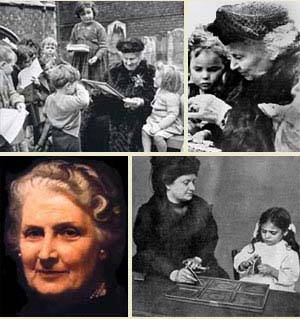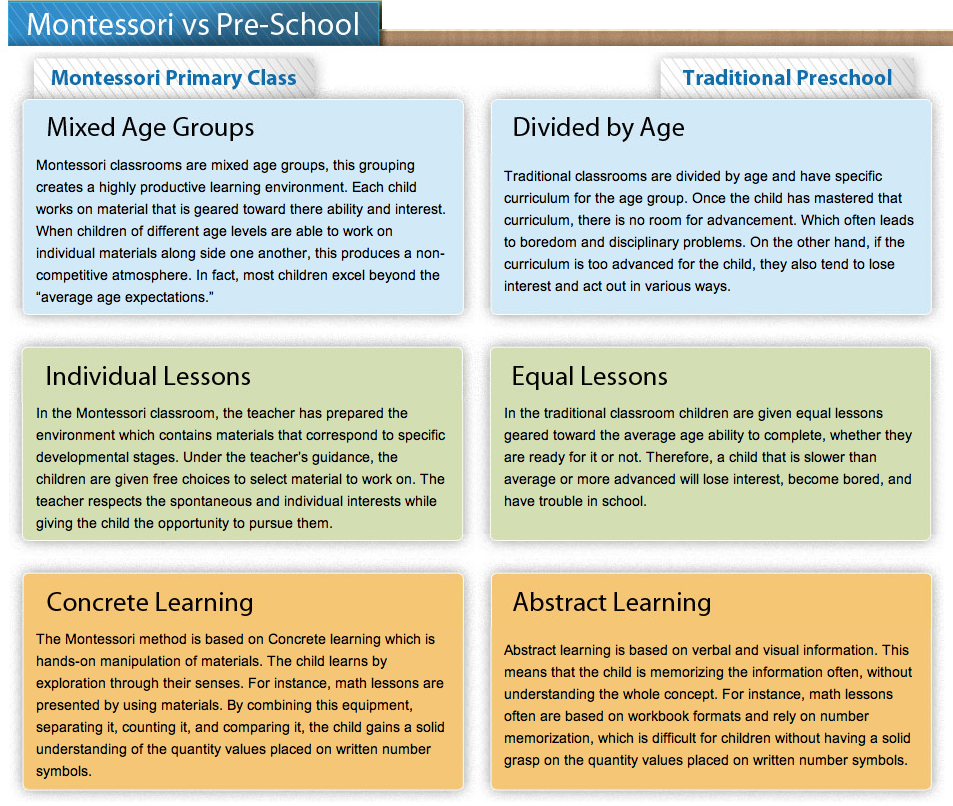“An interesting piece of work, freely chosen, which has the virtue of inducing concentration rather than fatigue, adds to the child’s energies and mental capacities (leading to) self-mastery.”
– Dr Maria Montessori
A Montessori classroom anywhere in the world will have happy and busy children engaged in purposeful work. The classroom itself is distinct; typically beautiful and enticing, but also characterized by the carefully prepared environment designed to reinforce the child’s independence and natural urge toward self-development.
 The room, the equipment, activities and the teachers respond to and guide children in ways which directly relate to their own developmental levels, they do not simply follow a curriculum. In essence the classroom provides an environment in which children can develop individually in ways which are appropriate to their age; each child respected and enabled to grow and learn at their own pace. Montessori classrooms feature calm, caring communities of children in three-year age groupings. Classes span either 3-6 years of age, 6-9 years of age, or 9-12 years of age.
The room, the equipment, activities and the teachers respond to and guide children in ways which directly relate to their own developmental levels, they do not simply follow a curriculum. In essence the classroom provides an environment in which children can develop individually in ways which are appropriate to their age; each child respected and enabled to grow and learn at their own pace. Montessori classrooms feature calm, caring communities of children in three-year age groupings. Classes span either 3-6 years of age, 6-9 years of age, or 9-12 years of age.
(Note that not all schools cater to all of these three ranges. Also, many schools offer comprehensive 0-3 year-old programs as well.)
The elements of all Montessori classes are simple and effective, nurturing and orderly. They are all linked together, none separated from the other. Montessori is holistic in its approach to children and to learning.
Intellectual Materials
The Montessori materials are beautifully handcrafted and are displayed on low, open shelves. These unique materials are tools to stimulate the child into logical thought and discovery. Each piece of material has a specific purpose and is presented in a manner that will enable them to direct their own learning. Each piece presents one concept or idea at a time and has what is known as a “control of error”. If the child has done something incorrectly, it will be self-evident. The geometric shape, for example, won’t fit the hole; or the last label will not match the last picture. In this way, children learn to work with increasing independence, taking control and responsibility for their own learning.
Structure and Freedom
The classroom is ordered and well planned. The curriculum and teaching materials are carefully selected and presented to each child. When children choose material they are then free to work with it for as long as it provides a challenge. This provides a structure for their learning. There should be physical, intellectual and social freedom. Everything is child-sized and all the activities are within reach to allow free choice.
Social Interaction
The Montessori classroom is not only a place for individual learning. It is a vibrant community of children, where the child learns to interact socially in a variety of ways. The three-year age range in every class, enables older children to teach the younger children, learning much themselves from this experience, while the younger children are inspired to more complex work by observing the older ones. With such a variety of levels in the classroom, each child can work at his or her own pace, unhindered by competition.

